-
×
 2017 GrowthHackers Conference Virtual Pass - Growth Hackers
1 × $70.00
2017 GrowthHackers Conference Virtual Pass - Growth Hackers
1 × $70.00 -
×
 10 Brain-Based Strategies to Help Children in the Classroom: Improve Emotional, Academic & Social Skills for Back to School - Tina Payne Bryson
1 × $29.00
10 Brain-Based Strategies to Help Children in the Classroom: Improve Emotional, Academic & Social Skills for Back to School - Tina Payne Bryson
1 × $29.00 -
×
 0-100K Case Study – Grant Ambrose
1 × $123.00
0-100K Case Study – Grant Ambrose
1 × $123.00 -
×
 12 Minute Stage Crazy - Body of a Rock Star
1 × $22.00
12 Minute Stage Crazy - Body of a Rock Star
1 × $22.00 -
×
 Harness the Power of the Bosnian Pyramids - Esther Bartkiw
2 × $27.00
Harness the Power of the Bosnian Pyramids - Esther Bartkiw
2 × $27.00 -
×
 2-Day Certificate Course: Treating Trauma in Intimate Relationships - Healing the Trauma Legacy in Couples Therapy - Janina Fisher
1 × $124.00
2-Day Certificate Course: Treating Trauma in Intimate Relationships - Healing the Trauma Legacy in Couples Therapy - Janina Fisher
1 × $124.00 -
×
 Emerging Adults: Clinical Strategies to Gain Independence, Defeat Anxiety and Succeed in the Real World - Kimberly Morrow & Elizabeth DuPont Spencer
1 × $34.00
Emerging Adults: Clinical Strategies to Gain Independence, Defeat Anxiety and Succeed in the Real World - Kimberly Morrow & Elizabeth DuPont Spencer
1 × $34.00 -
×
 2017-2018 Certificate Program in Traumatic Stress Studies
1 × $363.00
2017-2018 Certificate Program in Traumatic Stress Studies
1 × $363.00 -
×
 Awakening Through Your Difficult Emotions - Ram Dass
1 × $52.00
Awakening Through Your Difficult Emotions - Ram Dass
1 × $52.00 -
×
 Improving Diabetes Management: Tools for the Nurse - Nancy Moline
1 × $85.00
Improving Diabetes Management: Tools for the Nurse - Nancy Moline
1 × $85.00 -
×
 “Email Response Warrior + Email Inbox Warrior” – Jason Henderson
2 × $78.00
“Email Response Warrior + Email Inbox Warrior” – Jason Henderson
2 × $78.00 -
×
 Medical Marketing Mastery 100k Local Marketing Business - Jeff Smith
1 × $72.00
Medical Marketing Mastery 100k Local Marketing Business - Jeff Smith
1 × $72.00 -
×
 6 Figure Funnels Normal – Jane Copeland
1 × $94.00
6 Figure Funnels Normal – Jane Copeland
1 × $94.00 -
×
 10 Activities to Enhance Social-Emotional Literacy in the Classroom: Transform Student Behavior from Chaos to Calm - Lynne Kenney
1 × $19.00
10 Activities to Enhance Social-Emotional Literacy in the Classroom: Transform Student Behavior from Chaos to Calm - Lynne Kenney
1 × $19.00 -
×
 Advanced Strength and Power - Dan Baker
1 × $42.90
Advanced Strength and Power - Dan Baker
1 × $42.90 -
×
 Integrated Chronic Pain Management: Mental Health Interventions that Counteract Opiate Addiction - Robert Umlauf
1 × $85.00
Integrated Chronic Pain Management: Mental Health Interventions that Counteract Opiate Addiction - Robert Umlauf
1 × $85.00 -
×
 Grow with Quizzes - Chanti Zak
1 × $193.00
Grow with Quizzes - Chanti Zak
1 × $193.00 -
×
 Zumba Fitness - Total Body Transformation System (2008)
1 × $28.00
Zumba Fitness - Total Body Transformation System (2008)
1 × $28.00 -
×
 Basic - Intermediate Hypnosis - Gerald Kein
1 × $93.00
Basic - Intermediate Hypnosis - Gerald Kein
1 × $93.00 -
×
 "Fix My Job" binaural mantra meditation for attracting work you love - Michael Davis Golzmane
2 × $17.00
"Fix My Job" binaural mantra meditation for attracting work you love - Michael Davis Golzmane
2 × $17.00 -
×
 3 Day Advanced Mindfulness Certificate Course - Donald Altman
1 × $204.00
3 Day Advanced Mindfulness Certificate Course - Donald Altman
1 × $204.00 -
×
 Body Dysmorphia: The Hidden Disorder - Elizabeth DuPont Spencer & Kimberly Morrow
1 × $34.00
Body Dysmorphia: The Hidden Disorder - Elizabeth DuPont Spencer & Kimberly Morrow
1 × $34.00 -
×
 Advanced Kinesiology Taping Practitioner Certification - Aaron Crouch
2 × $85.00
Advanced Kinesiology Taping Practitioner Certification - Aaron Crouch
2 × $85.00 -
×
 Energy Enhancement Course : Sacred Dance
1 × $25.00
Energy Enhancement Course : Sacred Dance
1 × $25.00 -
×
 'Quantum' Chakra Clearing and Balancing Series - Jonette Crowley
1 × $52.00
'Quantum' Chakra Clearing and Balancing Series - Jonette Crowley
1 × $52.00 -
×
 10x Launches - Copy hacker - Ry Schwartz
1 × $92.00
10x Launches - Copy hacker - Ry Schwartz
1 × $92.00 -
×
 Treating Trauma Master Series 2017 - NICABM
1 × $18.00
Treating Trauma Master Series 2017 - NICABM
1 × $18.00 -
×
 8x Hero Academy – Alex Becker
1 × $94.00
8x Hero Academy – Alex Becker
1 × $94.00 -
×
 Critical Care Nurse Certification – CCRN Exam Prep Package with Practice Test and NSN Access - Cyndi Zarbano
1 × $72.00
Critical Care Nurse Certification – CCRN Exam Prep Package with Practice Test and NSN Access - Cyndi Zarbano
1 × $72.00 -
×
 2-Day: Medical Screening and Differential Diagnosis Intensive Training Course - Shaun Goulbourne
2 × $180.00
2-Day: Medical Screening and Differential Diagnosis Intensive Training Course - Shaun Goulbourne
2 × $180.00 -
×
 Adam Short - Niche Profit Full Control
1 × $132.00
Adam Short - Niche Profit Full Control
1 × $132.00 -
×
 Outsource School – OF Insider
1 × $85.00
Outsource School – OF Insider
1 × $85.00 -
×
 10-Minute Spiritual Vortex Clearing - Michael Davis Golzmane
1 × $10.00
10-Minute Spiritual Vortex Clearing - Michael Davis Golzmane
1 × $10.00 -
×
 Upgrade your productivity - Entheos Academy (VA)
1 × $25.00
Upgrade your productivity - Entheos Academy (VA)
1 × $25.00 -
×
 Tai Chi Chin Na - Yang Jwing Ming
1 × $33.00
Tai Chi Chin Na - Yang Jwing Ming
1 × $33.00 -
×
 Rhode Island Legal and Ethical Issues for Mental Health Clinicians - Susan Lewis
1 × $84.00
Rhode Island Legal and Ethical Issues for Mental Health Clinicians - Susan Lewis
1 × $84.00 -
×
 10x Emails Comprehensive – Copy Hackers
1 × $45.00
10x Emails Comprehensive – Copy Hackers
1 × $45.00
You may be interested in…
-
Add
 $300 a day YouTube Affiliate Marketing Blueprint - Hunter Edwards
$300 a day YouTube Affiliate Marketing Blueprint - Hunter Edwards
$147.00Original price was: $147.00.$43.00Current price is: $43.00. -
Add
 $100K Academy – Charlie Brandt
$100K Academy – Charlie Brandt
$597.00Original price was: $597.00.$63.00Current price is: $63.00. -
Add
 “Done-For-You” Client-Attraction Teleseminar Package – Michelle Schubnel
“Done-For-You” Client-Attraction Teleseminar Package – Michelle Schubnel
$597.00Original price was: $597.00.$80.00Current price is: $80.00. -
Add
 1 Hour SEO | Become a Technical Marketer
1 Hour SEO | Become a Technical Marketer
$193.00Original price was: $193.00.$40.00Current price is: $40.00. -
Add
 6 Week Affiliate Mastery Challenge 2015 (GB)
6 Week Affiliate Mastery Challenge 2015 (GB)
$2,997.00Original price was: $2,997.00.$252.00Current price is: $252.00.

 0-100K Case Study – Grant Ambrose
0-100K Case Study – Grant Ambrose  Harness the Power of the Bosnian Pyramids - Esther Bartkiw
Harness the Power of the Bosnian Pyramids - Esther Bartkiw 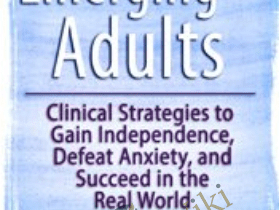 Emerging Adults: Clinical Strategies to Gain Independence, Defeat Anxiety and Succeed in the Real World - Kimberly Morrow & Elizabeth DuPont Spencer
Emerging Adults: Clinical Strategies to Gain Independence, Defeat Anxiety and Succeed in the Real World - Kimberly Morrow & Elizabeth DuPont Spencer 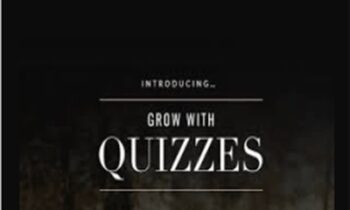 Grow with Quizzes - Chanti Zak
Grow with Quizzes - Chanti Zak 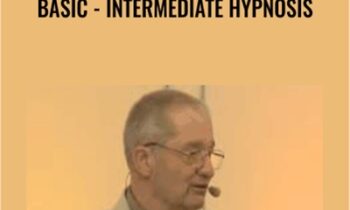 Basic - Intermediate Hypnosis - Gerald Kein
Basic - Intermediate Hypnosis - Gerald Kein  "Fix My Job" binaural mantra meditation for attracting work you love - Michael Davis Golzmane
"Fix My Job" binaural mantra meditation for attracting work you love - Michael Davis Golzmane  Energy Enhancement Course : Sacred Dance
Energy Enhancement Course : Sacred Dance 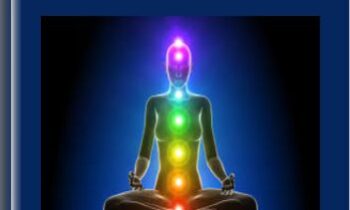 'Quantum' Chakra Clearing and Balancing Series - Jonette Crowley
'Quantum' Chakra Clearing and Balancing Series - Jonette Crowley 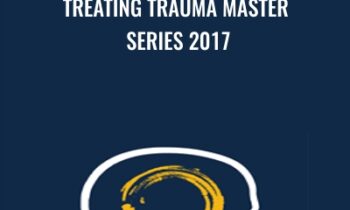 Treating Trauma Master Series 2017 - NICABM
Treating Trauma Master Series 2017 - NICABM  Adam Short - Niche Profit Full Control
Adam Short - Niche Profit Full Control  Outsource School – OF Insider
Outsource School – OF Insider  Upgrade your productivity - Entheos Academy (VA)
Upgrade your productivity - Entheos Academy (VA)  Tai Chi Chin Na - Yang Jwing Ming
Tai Chi Chin Na - Yang Jwing Ming 



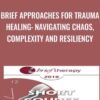

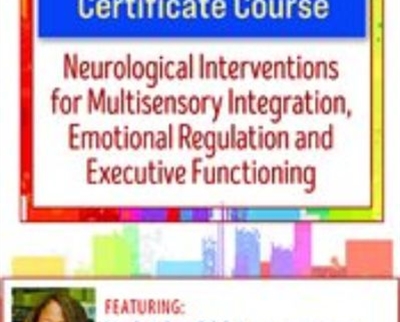
 Purchase this course you will earn
Purchase this course you will earn